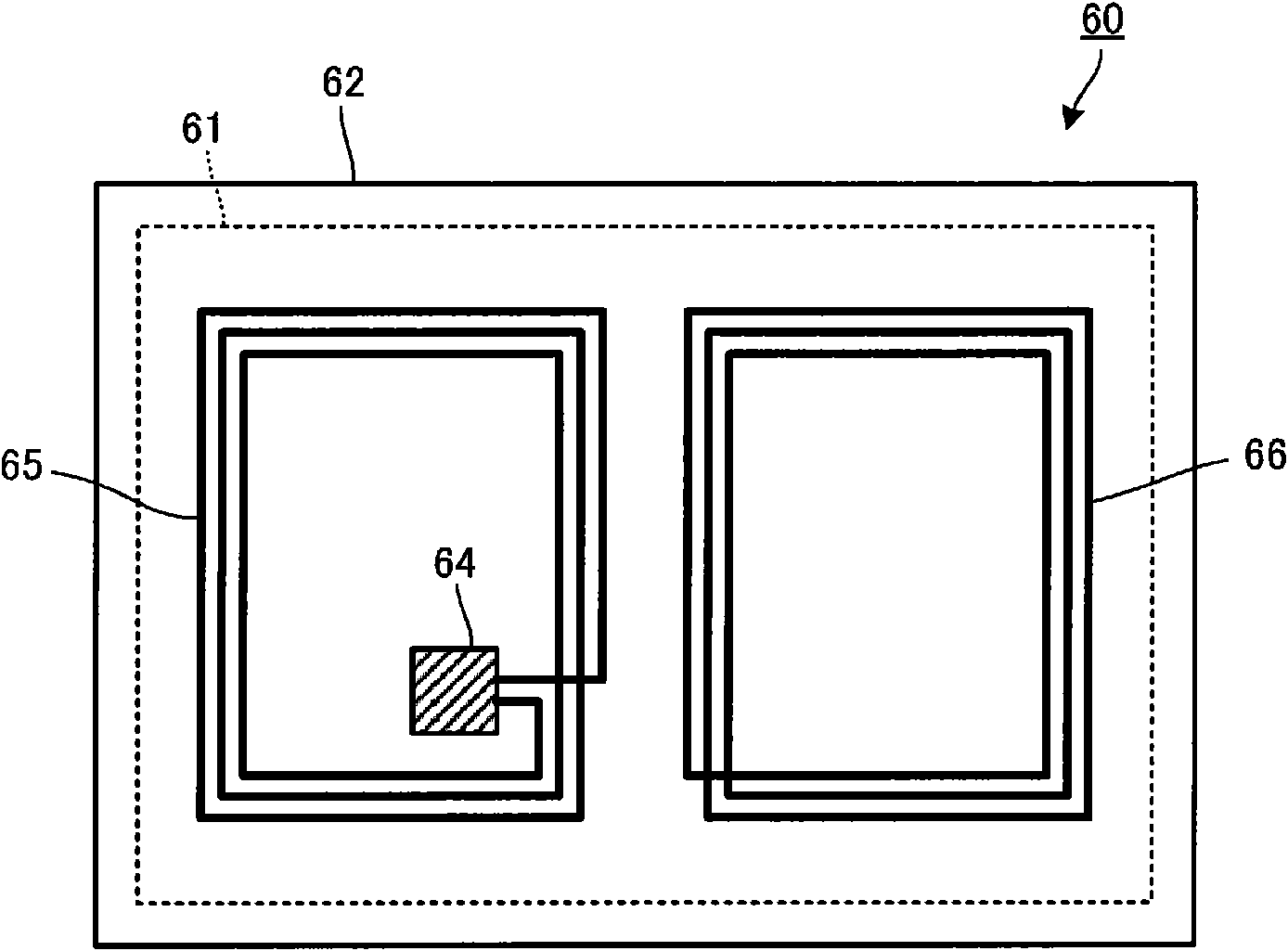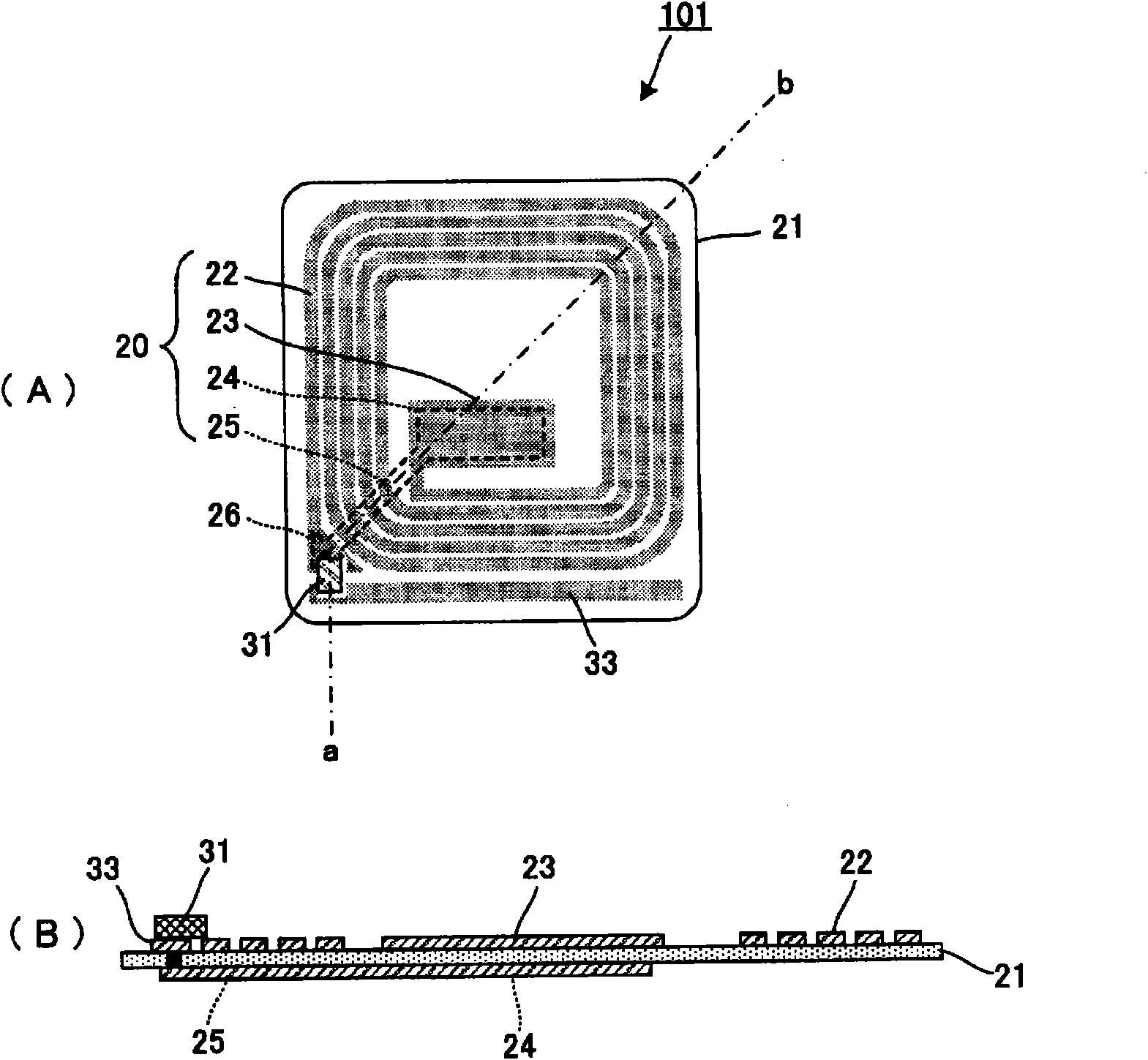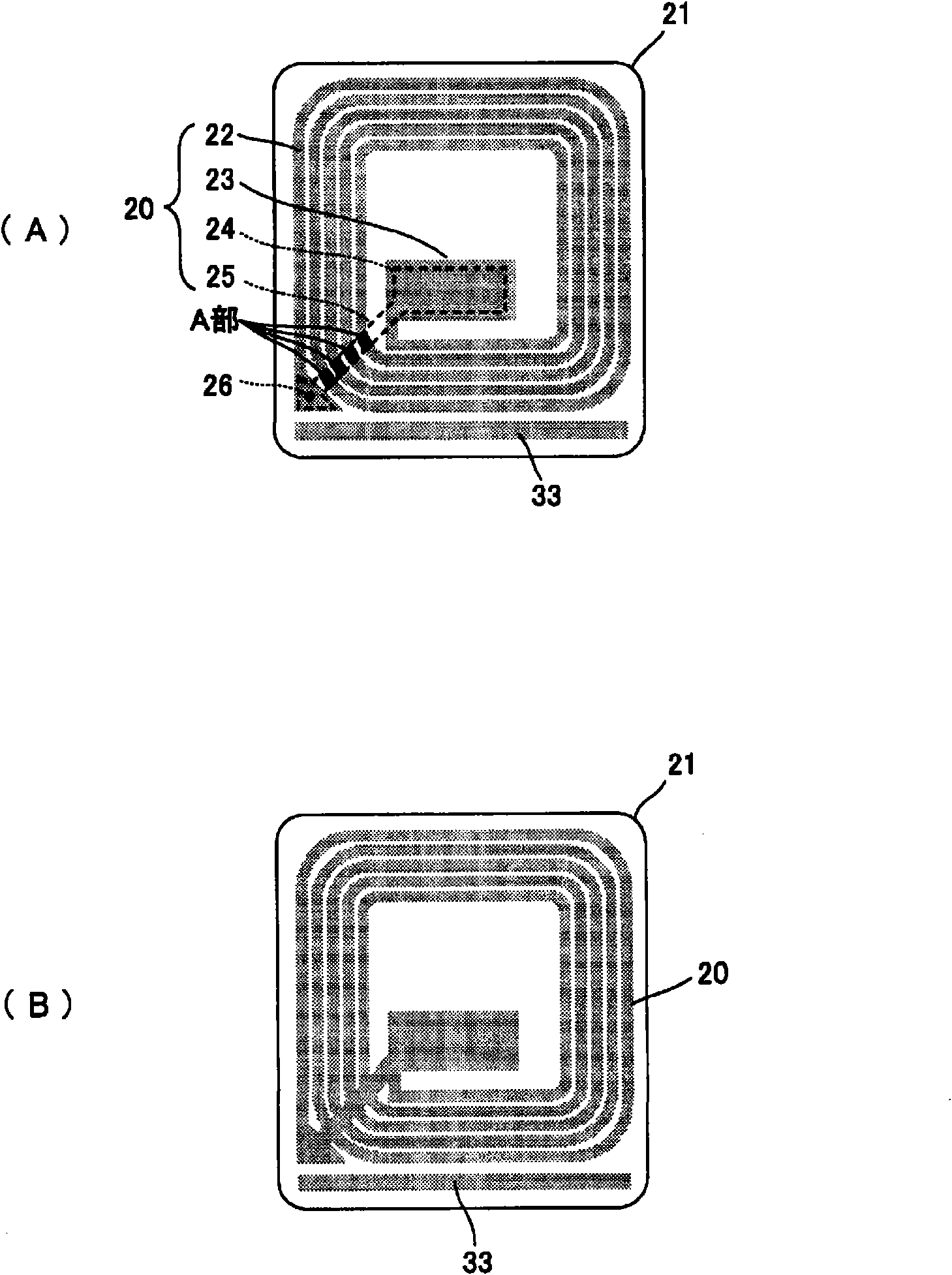Wireless ic device
A wireless and device technology, applied in the field of wireless IC devices, can solve the problems of increasing return loss, hindering the action of RF-ID tags, and interfering with electromagnetic fields, and achieves miniaturization, reduced occupation area, and excellent radiation characteristics.
- Summary
- Abstract
- Description
- Claims
- Application Information
AI Technical Summary
Problems solved by technology
Method used
Image
Examples
no. 2 Embodiment approach 》
[0074] Figure 4 It is a plan view of the wireless IC device of the second embodiment. figure 2 In the example shown, the linear radiation electrode 33 is formed along one side of the spiral line electrode portion 22 and one side of the substrate 21, but this Figure 4 In the example shown, the shape of the radiation electrode 33 is different from this. Figure 4 In the example (A), the radiation electrode 33 a has a folded shape so as to reciprocate along one side of the line electrode portion 22 and one side of the base material 21 .
[0075] in addition Figure 4 In the example of (B), the radiation electrode 33 b is formed in a linear shape along one side of the substrate 21 and in a direction away from the radiation / resonance common electrode 20 .
[0076] and in Figure 4 In the example (C), the radiation electrode 33 c is formed in an L-shape along both sides of the base material 21 .
[0077] about Figure 4 The structure and function other than the above are th...
no. 3 Embodiment approach 》
[0082] Figure 5 It is a configuration diagram showing the wireless IC device of the third embodiment, (A) is a plan view, and (B) is a cross-sectional view of its main part. figure 2 In the example shown, various electrodes are respectively formed on the upper surface and the lower surface of the base material 21, and capacitors are formed in the capacitance electrode portions facing each other across the base material 21. However, in this Figure 5 In the shown example, only the upper surface of the substrate 21 is used to form the circuit. That is, on the upper surface of the base material 21, a spiral-shaped line electrode portion 22 and a capacitor electrode portion 23 connected to the inner peripheral end are respectively formed. These electrodes are covered with an insulating layer 27, and the upper surface of the insulating layer 27 is connected to the capacitor electrode portion 23. A capacitive electrode portion 24 is formed at a position facing the electrode porti...
no. 4 Embodiment approach 》
[0086] Image 6 It is a plan view of the wireless IC device of the fourth embodiment, Figure 7 is a cross-sectional view of the electromagnetic coupling module 30 used in the wireless IC device 104 .
[0087] The electromagnetic coupling module 30 is constituted by a feeder circuit board 32 and a wireless IC chip 34 mounted thereon. In the first to third embodiments, the two connection terminals formed on the wireless IC 31 are directly connected to the radiation / resonance common electrode 20 and the radiation electrode 33, respectively. Image 6 In the example shown, electromagnetic coupling is performed with the radiation / resonance common electrode 20 and the radiation electrode 33, respectively.
[0088] Such as Figure 7As shown, capacitive electrodes 14aa, 14ab, 14ba, 14bb and inductance conductors 13a, 13b are formed inside the feed circuit board 32, respectively. Electrode pads for connecting capacitor electrodes 14aa and 14ba are formed on the upper surface of fee...
PUM
 Login to View More
Login to View More Abstract
Description
Claims
Application Information
 Login to View More
Login to View More - R&D
- Intellectual Property
- Life Sciences
- Materials
- Tech Scout
- Unparalleled Data Quality
- Higher Quality Content
- 60% Fewer Hallucinations
Browse by: Latest US Patents, China's latest patents, Technical Efficacy Thesaurus, Application Domain, Technology Topic, Popular Technical Reports.
© 2025 PatSnap. All rights reserved.Legal|Privacy policy|Modern Slavery Act Transparency Statement|Sitemap|About US| Contact US: help@patsnap.com



